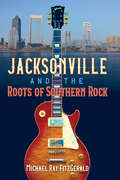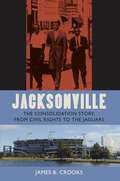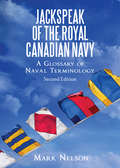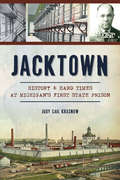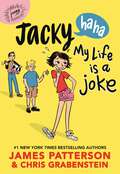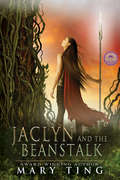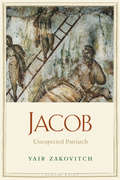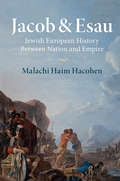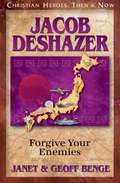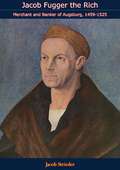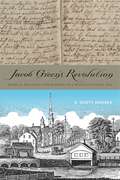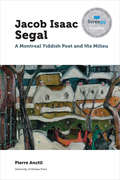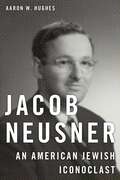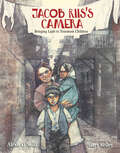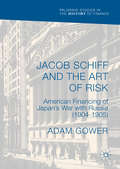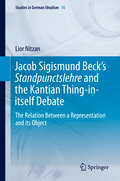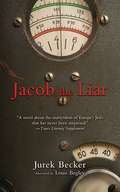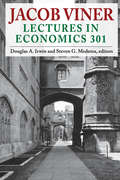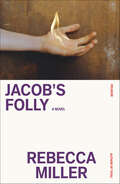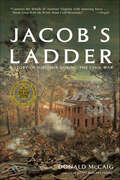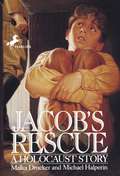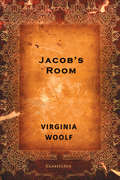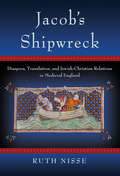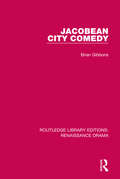- Table View
- List View
Jacksonville and the Roots of Southern Rock
by Michael Ray FitzGeraldThe enduring achievement and legacy of a rock movement The Allman Brothers Band and Lynyrd Skynyrd helped usher in a new kind of southern music from Jacksonville, Florida. Together, they and fellow bands like Blackfoot, 38 Special, and Molly Hatchet would reset the course of seventies rock. Yet Jacksonville seemed an unlikely hotbed for a new musical movement.Michael FitzGerald blends eyewitness detail with in-depth history to tell the story of how the River City bred this generation of legendary musicians. As he profiles essential bands alongside forerunners like Gram Parsons and Cowboy, FitzGerald reveals how the powerful local AM radio station worked with newspapers and television stations to nurture talent. Media attention in turn created a public hungry for live performances by area bands. What became the southern rock elite welded relentless determination to a ferocious work ethic, honing their gifts on a testing ground that brooked no weakness and took no prisoners.FitzGerald looks at the music as the diverse soundtrack to a neo-southern lifestyle that reconciled different segments of society in Jacksonville, and across the nation, in the late sixties and early seventies. A vivid journey into a crucible of American music, Jacksonville and the Roots of Southern Rock shines a light on the artists and songs that powered a phenomenon.
Jacksonville: The Consolidation Story, from Civil Rights to the Jaguars (The Florida History and Culture Series)
by James B. CrooksIn the 1950s and '60s Jacksonville faced daunting problems. Critics described city government as boss-ridden, expensive, and corrupt. African Americans challenged racial segregation, and public high schools were disaccredited. The St. Johns River and its tributaries were heavily polluted. Downtown development had succumbed to suburban sprawl. Consolidation, endorsed by an almost two-to-one majority in 1967, became the catalyst for change. The city's decision to consolidate with surrounding Duval County began the transformation of this conservative, Deep South, backwater city into a prosperous, mainstream metropolis. James B. Crooks introduces readers to preconsolidation Jacksonville and then focuses on three major issues that confronted the expanded city: racial relations, environmental pollution, and the revitalization of downtown. He shows the successes and setbacks of four mayors—Hans G. Tanzler, Jake Godbold, Tommy Hazouri, and Ed Austin—in responding to these issues. He also compares Jacksonville's experience with that of another Florida metropolis, Tampa, which in 1967 decided against consolidation with surrounding Hillsborough County. Consolidation has not been a panacea for all the city's ills, Crooks concludes. Yet the city emerges in the 21st century with increased support for art and education, new economic initiatives, substantial achievements in downtown renewal, and laudable efforts to improve race relations and address environmental problems. Readers familiar with Jacksonville over the last 40 years will recognize events like the St. Johns River cleanup, the building of the Jacksonville Landing, the ending of odor pollution, and the arrival of the Jaguars NFL franchise. During the administration of Mayor Hazouri from 1987 to 1991, Crooks was Jacksonville historian-in-residence at City Hall. Combining observations from this period with extensive interviews and documents (including a cache of files from the mezzanine of the old City Hall parking garage that contained 44 cabinets of letters, memos, and reports), he has written an urban history that will fascinate scholars of politics and governmental reform as well as residents of the First Coast city. A volume in the Florida History and Culture Series, edited by Raymond Arsenault and Gary R. Mormino
Jackspeak of the Royal Canadian Navy: A Glossary of Naval Terminology
by Mark NelsonPull up a bollard and get to know the colourful language of the Royal Canadian Navy. Do you ever get channel fever so bad only a great homeward bounders will cure you? Have you ever met Tug Wilson the brass-pounder, Dusty Miller the blanket stacker, or Nobby Clark the stoker? From aback to zizEX, the second edition of Jackspeak of the Royal Canadian Navy gives readers a chance to fill their boots with the colourful language of Canada’s senior service. Learn the difference between duff and no duff, box kickers and gut robbers, and Nelson’s blood and Neptune’s dandruff. Newly revised and expanded, with over 2,500 terms included!
Jacktown: History & Hard Times at Michigan’s First State Prison (Landmarks)
by Judy Gail KrasnowCompeting with the likes of Detroit and Ann Arbor, Jackson won the battle to build Michigan’s first state prison in 1838. During the era of the “Big House” and industrial growth, the penitentiary’s on-site factories and cheap inmate labor helped Jackson become a thriving manufacturing city. In contrast to Jacktown’s beautiful Greco-Roman exterior, medieval punishments, a strict code of silence, no heat, no electricity and a lack of plumbing defined life on the inside. Author Judy Gail Krasnow shares the incredible stories of life at Jacktown, replete with sadistic wardens, crafty escapees, Prohibition’s Purple Gang, a chaplain who ran a brothel and influential reformers.
Jacky Ha-Ha: My Life Is a Joke (Jacky Ha-Ha #2)
by James Patterson Chris Grabenstein Kerascoët<P>James Patterson's newest hilarious heroine returns in Jacky Ha-Ha: My Life Is a Joke, the sequel to the smash hit Jacky Ha-Ha---a #1 New York Times bestseller! <P>Jacky Hart has found a hidden talent in the performing arts, and she's a triple threat onstage! She wants nothing more than to act and sing all summer--but her parents have other plans for her. Jacky reluctantly signs up for a summer job in her resort town of Seaside Heights, New Jersey, where tourists come to enjoy the beach and fun carnival atmosphere. <P>Now she has serious responsibilities like her job and babysitting her younger sisters, but Jacky longs to perform in the summer stock performance of A Midsummer Night's Dream. Can she handle all of her important commitments and still have fun with her friends--or will she learn that juggling isn't one of her many talents? <P>James Patterson's middle grade jokester Jacky returns in this wild romp through summer in the Jersey Shore, featuring lively illustrations by French artist duo Kerascoët. <P><b>A New York Times Bestseller</b>
Jaclyn and the Beanstalk (A Tangled Fairy Tale)
by Mary TingWhat fate awaits a girl who hears monsters at night …Sixteen-year-old Jaclyn looks up to her father. An honest man who once fought for the king, he now teaches Jaclyn how to use her wits—and her sword. But he has a secret. And his secret may have a connection to the one thing Jaclyn is hiding from him.Upon hearing "monsters" are terrorizing the small villages around Black Mountain, Jaclyn's father and his friends head out to hunt them … but they don't return. Armed only with her sword and three magic beans—a gift from a mysterious old woman—Jaclyn sets out for Black Mountain to save her father.On her climb, one bean drops and grows into a beanstalk, catching her when she falls.She isn't the only one that takes the ride. Jack, her childhood friend and secret crush, is following her.Together, Jaclyn and Jack must battle to save not only their fathers, but the townspeople the beasts plan to lay waste to before it's too late.
Jacob
by Yair ZakovitchA powerful hero of the Bible, Jacob is also one of its most complex figures. Bible stories recounting his life often expose his deception, lies, and greed--then, puzzlingly, attempt to justify them. In this book, eminent biblical scholar Yair Zakovitch presents a complete view of the patriarch, first examining Jacob and his life story as presented in the Bible, then also reconstructing the stories that the Bible writers suppressed--tales that were well-known, perhaps, but incompatible with the image of Jacob they wanted to promote. Through a work of extraordinary "literary archaeology," Zakovitch explores the recesses of literary history, reaching back even to the stage of oral storytelling, to identify sources of Jacob's story that preceded the work of the Genesis writers. The biblical writers were skilled mosaic-makers, Zakovitch shows, and their achievement was to reshape diverse pre-biblical representations of Jacob in support of their emerging new religion and identity. As the author follows Jacob in his wanderings and revelations, his successes, disgraces, and disappointments, he also considers the religious and political environment in which the Bible was written, offering a powerful explication of early Judaism.
Jacob & Esau: Jewish European History Between Nation and Empire
by Malachi Haim HacohenJacob and Esau is a profound new account of two millennia of Jewish European history that, for the first time, integrates the cosmopolitan narrative of the Jewish diaspora with that of traditional Jews and Jewish culture. Malachi Haim Hacohen uses the biblical story of the rival twins, Jacob and Esau, and its subsequent retelling by Christians and Jews throughout the ages as a lens through which to illuminate changing Jewish-Christian relations and the opening and closing of opportunities for Jewish life in Europe. Jacob and Esau tells a new history of a people accustomed for over two-and-a-half millennia to forming relationships, real and imagined, with successive empires but eagerly adapting, in modernity, to the nation-state, and experimenting with both assimilation and Jewish nationalism. In rewriting this history via Jacob and Esau, the book charts two divergent but intersecting Jewish histories that together represent the plurality of Jewish European cultures.
Jacob Deshazer: Forgive Your Enemies (Christian Heroes Then & Now)
by Janet Benge Geoff BengeThree thousand feet above China, it was Jake's turn to jump. He slid his pistol, knife, and ration packets into the pockets of his leather jacket and edged toward the open hatch of the B-52 bomber. He checked the tension on the harness of his parachute, made sure the handle of the ripcord was free, and then began lowering himself out of the hatch and into the darkness. One of the famous Doolittle Raiders who first attacked Japan after the bombing of Pearl Harbor, Jacob DeShazer knew this one-way mission was dangerous. Indeed, it led to his capture as a prisoner of war. Beaten, malnourished, and alone in his cell, Jacob was given a Bible - and far away from home, this American soldier became a Christian. After the war, Jacob returned to Japan and served his former enemy for thirty years as a missionary. His testimony of forgiveness and reconciliation - of love over hate - inspires a powerful gospel message for our lives today.
Jacob Fugger: The Rich Merchant and Banker of Augsburg, 1459-1525
by Jacob StriederA fascinating biography of Jacob Fugger of the Lily (1459-1525), a major German merchant, mining entrepreneur and banker. He was a descendant of the Fugger merchant family located in the Free Imperial City of Augsburg, where he was born and later also elevated through marriage to Grand Burgher of Augsburg. Within a few decades he expanded the family firm to a business operating in all of Europe. He began his education at the age of 14 in Venice, which also remained his main residence until 1487. At the same time he was a cleric and held several prebendaries, even though he never lived in a monastery. Fugger is held to be one of the wealthiest individuals in modern history, alongside the early 20th century industrialists John D. Rockefeller and Andrew Carnegie.“The biography of Fugger by Professor Strieder is a fine example of the work done by economic historians in the field that is becoming specialized as business history.”—N. S. B. Gras
Jacob Green’s Revolution: Radical Religion and Reform in a Revolutionary Age
by S. Scott RohrerPart biography and part microhistory, Jacob Green’s Revolution focuses on two key figures in New Jersey’s revolutionary drama—Jacob Green, a radical Presbyterian minister who advocated revolution, and Thomas Bradbury Chandler, a conservative Anglican minister from Elizabeth Town who was a leading loyalist spokesman in America. Both men were towering intellects who were shaped by Puritan culture and the Enlightenment, and both became acclaimed writers and leading figures in New Jersey—Green for the rebelling colonists, Chandler for the king. Through their stories, this book examines the ways in which religion influenced reform during a pivotal time in American history.
Jacob Isaac Segal: A Montreal Yiddish Poet and His Milieu (Canadian Studies)
by Pierre AnctilTranslated by Vivian Felsen Finalist, 2018 Governor General’s Literary Awards (GGBooks), Translation category Born in the Ukraine in 1896, and settling in Montreal in 1910, Segal became one of the first Yiddish writers in Canada. His poetry, infused with lyricism and mysticism, along with the numerous essays and articles he penned, embodied both a rich literary tradition and the modernism of his day. Pierre Anctil has written so much more than a biography. For the first time, Segal’s poetic production is referenced, translated and rigorously analyzed, and includes over 100 pages of appendices, shedding light on the artistic, spiritual, cultural and historical importance of his oeuvre. By introducing the reader to the poet’s work through previously unpublished translations, Anctil demonstrates that in many respects it reflects the history of the Jewish immigrants who arrived in North America from Russia, the Ukraine and Poland at the beginning of the 20th century, as well as the tragic experiences of Jewish intellectual refugees of the interwar period. This admirably written, sweeping yet subtle, work will appeal both to scholars and to a broader audience. The original French version was awarded the prestigious 2014 Canada Prize in the Humanities by the Canadian Federation for the Humanities and Social Sciences.
Jacob Neusner: An American Jewish Iconoclast (Key Thinkers In The Study Of Religion Ser.)
by Aaron W HughesBiography: Neusner is a social commentator, a post-Holocaust theologian, and an outspoken political figure. Jacob Neusner (born 1932) is one of the most important figures in the shaping of modern American Judaism. He was pivotal in transforming the study of Judaism from an insular project only conducted by—and of interest to—religious adherents to one which now flourishes in the secular setting of the university. He is also one of the most colorful, creative, and difficult figures in the American academy. But even those who disagree with Neusner’s academic approach to ancient rabbinic texts have to engage with his pioneering methods. In this comprehensive biography, Aaron Hughes shows Neusner to be much more than a scholar of rabbinics. He is a social commentator, a post-Holocaust theologian, and was an outspoken political figure during the height of the cultural wars of the 1980s. Neusner’s life reflects the story of what happened as Jews migrated to the suburbs in the late 1940s, daring to imagine new lives for themselves as they successfully integrated into the fabric of American society. It is also the story of how American Jews tried to make sense of the world in the aftermath of the extermination of European Jewry and the subsequent creation of the State of Israel in 1948, and how they sought to define what it meant to be an American Jew. Unlike other great American Jewish thinkers, Neusner was born in the U.S., and his Judaism was informed by an American ethos. His Judaism is open, informed by and informing the world. It is an American Judaism, one that has enabled American Jews—the freest in history—to be fully American and fully Jewish.
Jacob Riis's Camera: Bringing Light to Tenement Children
by Alexis O'NeillThis revealing biography of a pioneering photojournalist and social reformer Jacob Riis shows how he brought to light one of the worst social justice issues plaguing New York City in the late 1800s--the tenement housing crisis--using newly invented flash photography.Jacob Riis was familiar with poverty. He did his best to combat it in his hometown of Ribe, Denmark, and he experienced it when he immigrated to the United States in 1870. Jobs for immigrants were hard to get and keep, and Jacob often found himself penniless, sleeping on the streets or in filthy homeless shelters. When he became a journalist, Jacob couldn't stop seeing the poverty in the city around him. He began to photograph overcrowded tenement buildings and their impoverished residents, using newly developed flash powder to illuminate the constantly dark rooms to expose the unacceptable conditions. His photographs inspired the people of New York to take action. Gary Kelley's detailed illustrations perfectly accompany Alexis O'Neill's engaging text in this STEAM title for young readers.
Jacob Schiff and the Art of Risk: American Financing of Japan's War with Russia (1904-1905) (Palgrave Studies in the History of Finance)
by Adam GowerJacob Henry Schiff (1847–1920), a German-born American Jewish banker, facilitated critical loans for Japan in the early twentieth century. Working on behalf of the firm of Kuhn, Loeb & Co., Schiff’s assertiveness in favour of Japan separated him from his fellow German Jewish financiers and the banking establishment generally. This book’s analysis differs from the consensus that Schiff funded Japan largely out of enmity towards Russia but rather sought to work with Japan for over thirty years. This was as much a factor in his actions surrounding the Russo-Japanese War (1904–1905) as his concern to thwart Russian antisemitism. Of interest to financial historians alongside Japanese historians and academics of both genres, this book provides a lively and thoroughly researched volume that precisely focuses on Schiff’s mastery of banking.
Jacob Sigismund Beck's Standpunctslehre and the Kantian Thing-in-itself Debate
by Lior NitzanThis book examines the unique views of philosopher Jacob Sigismund Beck, a student of Immanuel Kant who devoted himself to an exploration of his teacher's doctrine and to showing that Kant's transcendental idealism is, contra to the common view, both internally consistent and is not a form of subjective idealism. In his attempt to explain away certain apparent contradictions found in Kant's system, Beck put forward a new reading of Kant's critical theory, a view, which came to be known as the Standpunctslehre, the Doctrine of the Standpoint. Author Lior Nitzan reconstructs, step by step, the historical development of Beck's doctrine. He shows how Beck's unique view is drastically different from that of his contemporaries and presents the relevance of Beck to contemporary debates about the proper interpretation of Kant's notion of objectivity, the refutation of idealism and the role of the thing in itself in Kant's transcendental idealism. In doing so, Nitzan presents a defense of Beck's radical perspective of Kant's theory and claims that some of Kant's negative responses to it may in fact be due more to the adversary academic environment at the time than to Kant's true, well considered, opinion. Jacob Sigismund Beck's Standpunctslehre challenges the two dominant schools in the interpretation of Kant's transcendental idealism--the "two world" and the "two aspect" view. It presents a new way of understanding Kant's transcendental idealism, according to which the thing in itself plays no positive role in relation to the possibility of experience. Moreover, it claims that eliminating the thing in itself as the ultimate object of knowledge is not to admit idealism but in fact is the only way to consistently uphold realism. In addition, the book also addresses the question why, assuming that the proposed interpretation is correct, Kant had chosen not to make his true intentions clear.
Jacob The Liar
by Jurek BeckerCut off from all news of the war along with thousands of fellow prisoners, Jacob Heym accidentally overhears a radio broadcast that reveals the Red Army's advancement and is forced to tell a series of lies in order to explain his knowledge.
Jacob Viner: Lectures in Economics 301
by Douglas A. Irwin Steven G. MedemaThis book presents, for the first time, a detailed transcription of Jacob Viner's Economics 301 class as taught in 1930. These lecture notes provide insight into the legacy of Jacob Viner, whose seminal contributions to fields such as international economics and the history of economics are well known, but whose impact in sparking the revival of Marshallian microeconomics in the United States via his classroom teaching has been less appreciated.Generations of graduate students at the University of Chicago have taken Economics 301. The course has been taught by such luminaries as Milton Friedman and Gary Becker, and remains an introduction to the analytical tools of microeconomics and the distinctive Chicago way of thinking about the market system. This demanding and rigorous course first became famous in the 1930s when it was taught by Jacob Viner.When read in tandem with the Transaction editions of Milton Friedman's Price Theory, Frank Knight's The Economic Organization, and Gary Becker's Economic Theory, Viner's lectures provide the reader with important insights into the formative period of Chicago price theory. These recently discovered notes from Viner's class will be important for historians of economic thought and anyone interested in the origins of the Chicago School of Economics.
Jacob's Folly: A Novel
by Rebecca MillerA luminous novel-funny and moving in equal measure-that shines with the author's unique talentsJacob's Folly is a rollicking, ingenious, saucy book, brimful of sparkling, unexpected characters, that takes on desire, faith, love, acting-and reincarnation. In eighteenth-century Paris, Jacob Cerf is a Jew, a peddler of knives, saltcellars, and snuffboxes. Despite a disastrous teenage marriage, he is determined to raise himself up in life, by whatever means he can. More than two hundred years later, Jacob is amazed to find himself reincarnated as a fly in the Long Island suburbs of twenty-first-century America, his new life twisted in ways he could never have imagined. But even the tiniest of insects can influence the turning of the world, and thanks to his arrival, the lives of a reliable volunteer fireman and a young Orthodox Jewish woman nursing a secret ambition will never be the same. Through the unique lens of Jacob's consciousness, Rebecca Miller explores change in all its different guises-personal, spiritual, literal. The hold of the past on the present, the power of private hopes and dreams, the collision of fate and free will: Miller's world-which is our own, transfigured by her clear gaze and by her sharp, surprising wit-comes brilliantly to life in the pages of this profoundly original novel.
Jacob's Ladder: A Story of Virginia During the War
by Donald McCaigWinner of the Michael Shaara Award for Excellence in Civil War Fiction A civil war saga that resonates with the bitter glory and human shame of the Confederacy.Jacob’s Ladder is a Civil War epic, a love story that pits the indomitable longing of the human heart against circumstances of racism, slavery, and war. Duncan Gatewood, seventeen and heir to the Gatewood plantation, falls in love with Maggie, a mulatto slave, who conceives a son, Jacob. Maggie and Jacob are sold south, and Duncan is packed off to the Virginia Military Institute. As Duncan fights for Robert E. Lee, Jesse—a Gatewood slave whose love for Maggie is unrequited—escapes north and enlists in Lincoln’s army, determined to confront his former masters, while Maggie finds herself living a life she never could have imagined as the wife of a blockade runner.From the interlocked lives of masters and slaves, Donald McCaig conjures a passionate and richly textured story in the heart of America’s greatest war. The destiny of these three compelling characters connect a Vicksburg brothel to a Richmond salon, the nightmare of a Confederate hospital to the lurid hell of battlefields at Fredericksburg and Chancellorsville.Winner of the John Eston Cook Award Winner of the Boyd Military Novel Award
Jacob's Rescue
by Malka Drucker Michael HalperinOnce Jacob Gutgeld lived with his family in a beautiful house in Warsaw, Poland. He went to school and played hide-and-seek in the woods with his friends. But everything changed the day the Nazi soldiers invaded in 1939. Suddenly it wasn't safe to be Jewish anymore. Jacob had to go live with complete strangers in order to stay safe. He had a new name, new siblings, new parents, and a new home. And he had to spend much of his time hiding. This is a true story of Jacob, his family, and survival.
Jacob's Room (Oxford World's Classics)
by Virginia WoolfA young man's life during the early years of the twentieth century is examined through the eyes of those closest to him. As Jacob Flanders grows from childhood to adulthood, the events and people that influence his life are examined solely through the perspectives of others, leading to an incomplete understanding of who Jacob really is.Virginia Woolf's third novel Jacob's Room is a character study that ponders how well any person can be known. Following the author's more conventional novels The Voyage Out and Night and Day, Jacob's Room is as an important modernist text, demonstrating Woolf's progression as a writer of modernist literature.Be it mystery, romance, drama, comedy, politics, or history, great literature stands the test of time. ClassicJoe proudly brings literary classics to today's digital readers, connecting those who love to read with authors whose work continues to get people talking. Look for other fiction and non-fiction classics from ClassicJoe.
Jacob's Shipwreck: Diaspora, Translation, and Jewish-Christian Relations in Medieval England
by Ruth NisseJewish and Christian authors of the High Middle Ages not infrequently came into dialogue or conflict with each other over traditions drawn from ancient writings outside of the bible. Circulating in Latin and Hebrew adaptations and translations, these included the two independent versions of the Testament of Naphtali in which the patriarch has a vision of the Diaspora, a shipwreck that scatters the twelve tribes. The Christian narrative is linear and ends in salvation; the Jewish narrative is circular and pessimistic. For Ruth Nisse, this is an emblematic text that illuminates relationships between interpretation, translation, and survival.In Nisse’s account, extrabiblical literature encompasses not only the historical works of Flavius Josephus but also, in some of the more ingenious medieval Hebrew imaginative texts, Aesop’s fables and the Aeneid. While Christian-Jewish relations in medieval England and Northern France are most often associated with Christian polemics against Judaism and persecutions of Jews in the wake of the Crusades, the period also saw a growing interest in language study and translation in both communities. These noncanonical texts and their afterlives provided Jews and Christians alike with resources of fiction that they used to reconsider boundaries of doctrine and interpretation. Among the works that Nisse takes as exemplary of this intersection are the Book of Yosippon, a tenth-century Hebrew adaptation of Josephus with a wide circulation and influence in the later middle ages, and the second-century romance of Aseneth about the religious conversion of Joseph’s Egyptian wife. Yosippon gave Jews a new discourse of martyrdom in its narrative of the fall of Jerusalem, and at the same time it offered access to the classical historical models being used by their Christian contemporaries. Aseneth provided its new audience of medieval monks with a way to reimagine the troubling consequences of unwilling Jewish converts.
Jacob's Way
by Gilbert Morris"The army makes a man hard sometimes. I remember a young girl no more than ten who gave me a glass of buttermilk just outside of Chancellorsville. I still remember that. I guess that’s all my life is. Some pictures fading out behind me, and there’s not much before me." Reisa listened as he spoke. She knew that he was a man who longed for goodness, and longed for friends, and perhaps even a wife and family. Finally she said, "I hope you find your way, Ben. God is real, and love is real." Fleeing a bloody pogrom that threatens their tiny Russian village, Reisa Dimitri and her grandfather, Jacob, sail the ocean to a new life in America. They are swiftly embraced by New York’s Jewish community. But God has other plans that will call them far from the familiar warmth and ways of their culture. Accompanied by their huge, gentle friend, Dov, Reisa and Jacob set out to make their living as traveling merchants in the post-Civil-War South. There, as new and unexpected friendships unfold, the aged Jacob searches for answers concerning the nature of the Messiah he has spent a lifetime looking and longing for. And there, the beautiful Reisa finds herself strangely drawn to Ben Driver--a man with a checkered past, a painful present, and a deadly enemy who will stop at nothing to destroy him. Fast-paced and tender by turn, Jacob’s Way is a heartwarming novel about human love, divine faithfulness, and the restoration of things that had seemed broken beyond repair.
Jacobean City Comedy (Routledge Library Editions: Renaissance Drama)
by Brian GibbonsThe first decade of the Jacobean age witnessed a sudden profusion of comedies satirizing city life; among these were comedies by Ben Jonson, John Marston and Thomas Middleton, as well as the bulk of the repertory of the newly-established children’s companies at Blackfriars and Paul’s. The playwrights self-consciously forged a new genre which attracted London audiences with its images of folly and vice in Court and City, and hack-writing dramatists were prompt to cash in on a new theatrical fashion. This study, first published in 1980, examines ways in which the Jacobean city comedy reflect on the self-consciousness of audiences and the concern of the dramatists with Jacobean society. This title will be of interest of students of Renaissance Drama, English Literature and Performance.
